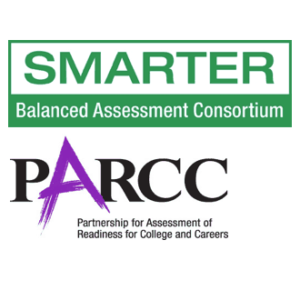SMARTER Balanced and PARCC to Launch New Technology Readiness Tool to Support Transition to Online Assessments

 The SMARTER Balanced Assessment Consortium and the Partnership for Assessment of Readiness for College and Careers (PARCC) in assistance with the State Educational Technology Directors Association (SETDA) announced today a contract with Pearson to develop a new, open source Technology Readiness Tool with federal Race to the Top (RTTT) Assessment Program grants.
The SMARTER Balanced Assessment Consortium and the Partnership for Assessment of Readiness for College and Careers (PARCC) in assistance with the State Educational Technology Directors Association (SETDA) announced today a contract with Pearson to develop a new, open source Technology Readiness Tool with federal Race to the Top (RTTT) Assessment Program grants.
Starting in the 2014 to 2015 school year, SETDA will work with state education agencies to evaluate and determine twice annually the technology and infrastructure needed for new online assessments.
“Online assessments offer states and school districts clear advantages, including expanded item types, timely feedback to inform instruction, and improved accommodations for students with special needs,” said Joe Willhoft, Executive Director of SMARTER Balanced. “To be successful, however, careful planning and management of the transition process is a must. That’s why both consortia are working with state and local education leaders from around the country to develop this new, free tool to help states facilitate the evaluation of current technology and infrastructure for online testing.”
“Navigating any type of educational change is a complicated process and the move to online assessments brings with it great opportunities and unique challenges,” said Laura Slover, Senior Vice President at Achieve, which is the project management partner for the PARCC consortium. “Both test consortia are focused on providing the tools and resources to remove any potential roadblocks for states as they move through the transition process.”
The open source technology will allow the consortia free access to the source code. Both consortia plan to work to build next-generation assessments that align with Common Core Standars and accurately evaluate students’ college and career readiness. The Technology Readiness Tool will provide states access to readiness indicators such as equipment, infrastructure, staff, and delivery.
“With their investment in the development of this Technology Readiness Tool, the leaders of SMARTER Balanced and PARCC will put states and school districts on a path toward successfully implementing next-generation assessments,” said Douglas Kubach, President and CEO, the Assessment and Information group of Pearson. “At Pearson we are deeply committed to contributing our vision and expertise to support the transition to online assessments.”
“The launch of the joint PARCC-SBAC technology readiness work is exciting. The tool will allow us to measure the technology capacity of schools and districts against a common metric and use case – i.e., the ability to participate in technology-enhanced next generation assessments – for the first time in the nation’s history,” said Douglas Levin, Executive Director of SETDA. “It will raise awareness of what is already in use in schools and classrooms that can be leveraged for teaching and learning goals, of the distance we have yet to go, and spur a dialogue about the strategies we can take to close the gaps. Make no mistake that while this effort is about technology, it is fundamentally about the tools and resources we need to meet our education reform goals in the 21st century. State educational technology leaders are committed to driving this “shift to digital” and ensuring that we remain focused on issues of equity, access, and excellence.”
About the launch, Doug Leve of SETDA said, The launch of the joint PARCC-SBAC technology readiness work will allow us to measure the technology capacity of schools and districts against a common metric and use case – i.e., the ability to
participate in technology-enhanced next generation assessments – for the first time in the nation’s history. It will raise awareness of what is already in use in schools and classrooms that can be leveraged for teaching and learning goals, of the distance we have yet to go, and spur a dialogue about the strategies we can take to close the gaps. Make no mistake that while this effort is about technology, it is fundamentally about the infrastructure, tools and resources we need to meet our education reform goals in the 21st century.
For more, check out a blog post by Education Sector’s Bill Tucker on why he feels this effort is the most ambitious ‘digital learning
project’ underway right now in the nation:


0 Comments
Leave a Comment
Your email address will not be published. All fields are required.